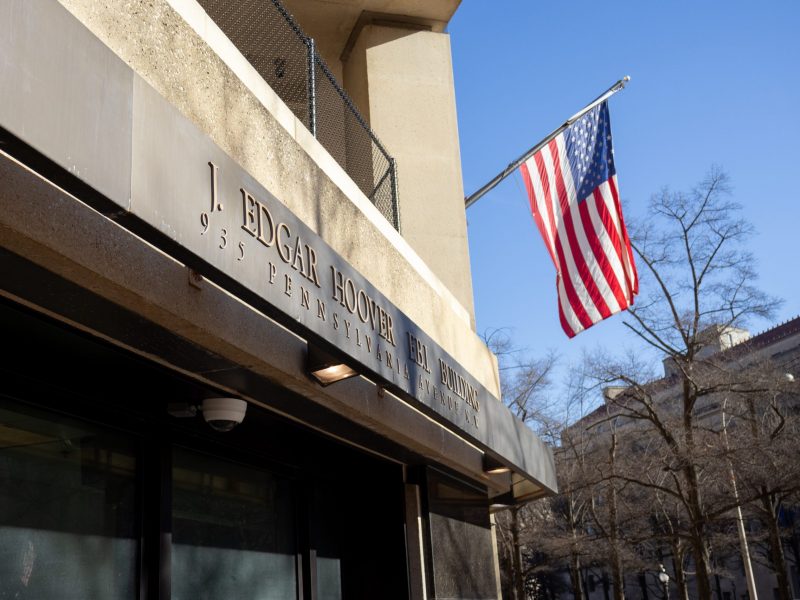In response to Maryland’s ongoing opioid epidemic, Gov. Larry Hogan declared a “state of emergency” for this state Wednesday.
The announcement is a step to help law enforcement and other state agencies address Maryland’s growing opioid problem, according to The Washington Post. Hogan initiated the state of emergency through an executive order.
“We need to treat this crisis the exact same way we would treat any other state emergency,” Hogan said in a news release. “We must cut through the red tape so that we are empowering the important work being done in our many state agencies and at the local level all across our state. This is about taking an all-hands-on-deck approach so that together, we can save the lives of thousands of Marylanders.”
[Read more: UMPD is training to fight increasing opiate overdose rates in Maryland]
Hogan, whose cousin died of an overdose, also announced a supplemental budget of about $50 million over five years to support state efforts to improve recovery, treatment and enforcement, according to the news release. The funding will provide “flexible” funding for public health and safety officials.
The initiatives aim to increase collaboration between state and local agencies, as well as community groups, in an effort to curb the epidemic. Between January 2016 and September 2016, 1,468 Maryland residents died from overdoses — up 62 percent from the same period in 2015 — according to the Maryland Department of Health and Mental Hygiene. Deaths related to a powerful synthetic opioid, fentanyl, nearly tripled during the first nine months of 2016, totaling 738, according to The Post.
Heroin-related deaths in this state have tripled since 2010 and increased by 29 percent from 2014 to 2015 alone, according to the Maryland Department of Health and Mental Hygiene.
“I just spent four days with the National Governors Association, meeting with the president, the vice president … and this was certainly one of the issues we talked about and focused on,” Hogan said in a video statement. “The reality is that this threat has rapidly escalated with the introduction of fentanyl.”
The governor appointed Clay Stamp, his senior emergency management adviser, to lead the effort to combat the crisis. Stamp previously managed Hogan’s administration’s response to the 2015 riots in Baltimore.
In his proposed 2018 budget, Hogan has allocated $1.3 billion to mental health and substance use disorders, with $159 million for existing non-Medicaid substance use disorder treatment programs, showing his continued moves to address this state’s opioid crisis.
His declaration stems from the initial findings of the Opioid Operational Command Center, which was established Jan. 24 as part of his 2017 Heroin and Opioid Prevention, Treatment, and Enforcement Initiative. The initiative created the command center and provided an additional $4 million in funding to help those struggling to recover from addiction and proposed three pieces of legislation to help curb the epidemic.
[Read more: Gov. Larry Hogan announced an initiative to address Maryland’s heroin and opioid epidemic]
One of Hogan’s bills is the Distribution of Opioids Resulting in Death Act, which would create a new felony, punishable by up to 30 years in prison, for those who distribute opioids resulting in a user’s death. Another bill would limit how much treatment is prescribed upon initial consultations, limiting initial prescriptions to seven days of supplies.
The command center’s findings demonstrated this state’s need to improve flexibility among local jurisdictions, while Wednesday’s executive order gives emergency powers to local and state emergency management personnel to coordinate between state, local and community organizations.
“The fact of the matter is that people all across Maryland, and across our country, are looking for answers when it comes to this heroin and opioid epidemic,” Lt. Gov. Boyd Rutherford said in a news release. “Too many families know the devastation caused by this crisis and the death toll is climbing.”
In October, Hogan signed a regional compact with Washington and Virginia to coordinate a regional response to the epidemic, according to the news release. He also signed an executive order in February 2015, creating the Heroin and Opioid Emergency Task Force, which developed 33 recommendations that focused on prevention, treatment and enforcement to combat the opioid and heroin crisis.
At the University of Maryland, University Police Chief David Mitchell initiated training for the use of Narcan, a drug that can reverse the effects of an overdose. The University Health Center also offers programs to help those struggling with heroin and opioid addiction.
“Ultimately, this is about saving lives, and it will take all of us working together in a collaborative, holistic approach to achieve that,” Rutherford said.



